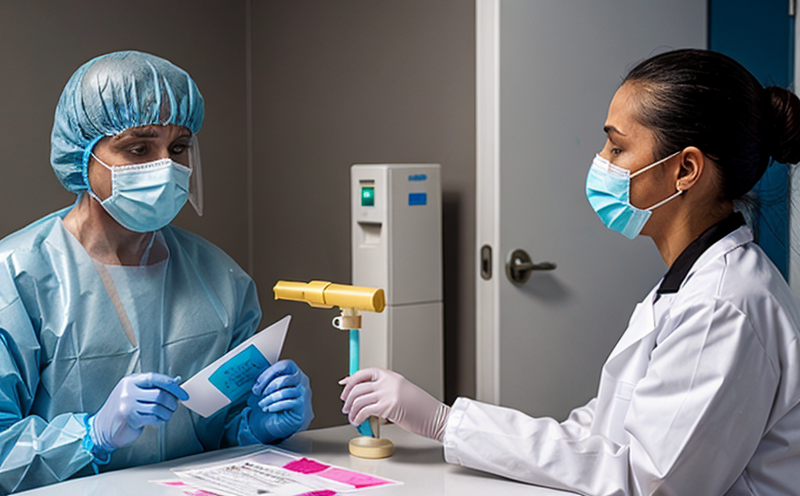Vibrio cholerae Testing in Seafood Products
The presence of Vibrio cholerae in seafood products poses a significant risk to public health, as this bacterium is the causative agent of cholera—a potentially fatal diarrheal disease. Proper testing and quality assurance are critical for ensuring that seafood products do not harbor this pathogen at levels that could lead to contamination risks during processing or consumption.
The Vibrio genus comprises several species, but Vibrio cholerae is of particular concern due to its ability to survive in marine environments and the potential for it to cause illness. In recent years, there has been an increased focus on food safety measures within the seafood industry, with regulatory bodies around the world implementing stringent guidelines to prevent contamination.
In this service, we provide comprehensive testing solutions for detecting Vibrio cholerae in raw and processed seafood products, including fresh fish, shrimp, crabs, and mollusks. Our methodology adheres to international standards such as ISO 16867-2:2020, which provides guidelines on the isolation and detection of Vibrio cholerae. The testing process involves several steps:
- Sample Collection: Samples are collected from various stages of production, including incoming raw materials, processing environments, and finished products. Proper aseptic techniques must be employed to avoid contamination.
- Preliminary Screening: The samples undergo preliminary screening using rapid diagnostic tests (RDTs) that can detect the presence of Vibrio spp., including Vibrio cholerae.
- Isolation and Identification: Positive samples are then cultured on selective media, such as thiosulfate-citrate-bile salts-sucrose agar (TCBS), which allows for the isolation of Vibrio spp. Further identification using biochemical tests or molecular methods is conducted to confirm the presence of Vibrio cholerae.
- Molecular Detection: Polymerase chain reaction (PCR) is used as an alternative method for rapid and accurate detection, especially in cases where culture-based methods may not be feasible.
- Quantification: Quantitative PCR (qPCR) techniques are employed to determine the concentration of Vibrio cholerae present in the sample. This is crucial for ensuring compliance with regulatory limits and assessing potential contamination risks.
The results of these tests provide critical information for quality managers, compliance officers, R&D engineers, and procurement teams responsible for ensuring food safety. By identifying Vibrio cholerae early in the production process, seafood processors can take corrective actions to prevent further contamination and protect public health.
Applied Standards
The testing of seafood products for Vibrio cholerae follows internationally recognized standards that ensure consistent and reliable results. The primary standard used in our laboratory is ISO 16867-2:2020, which provides detailed protocols for the isolation and detection of Vibrio spp., including Vibrio cholerae. This standard is widely accepted by regulatory authorities and food safety organizations around the world.
In addition to ISO standards, we also adhere to other relevant guidelines such as AOAC Official Method 995.12 for the detection of Vibrio spp., which complements our testing protocols. Compliance with these international standards ensures that our test results are reliable and can be trusted by stakeholders in the seafood industry.
The process also involves adherence to local regulations, such as those set forth by the Food and Agriculture Organization (FAO) of the United Nations and the World Health Organization (WHO), which provide recommendations for safe levels of Vibrio cholerae in seafood products. By staying aligned with these standards, we ensure that our testing services meet or exceed industry expectations.
Benefits
- Enhanced Food Safety: Detecting and eliminating Vibrio cholerae in seafood products helps to prevent foodborne illnesses, thereby protecting public health.
- Compliance with Regulations: Our testing ensures that seafood processors meet the stringent requirements set by regulatory bodies such as the FDA, EU regulations, and other national standards.
- Risk Management: Early detection of Vibrio cholerae allows for timely corrective actions, reducing the risk of contamination throughout the supply chain.
- Reputation Protection: By maintaining high safety standards, seafood producers can protect their reputation and avoid negative publicity associated with foodborne illness outbreaks.
- Customer Confidence: Providing test results to customers ensures transparency and builds trust in the quality of the products being offered.
Our testing services not only help seafood processors meet regulatory requirements but also contribute to a safer global food supply chain. By ensuring that Vibrio cholerae is absent from seafood products, we support the health and well-being of consumers worldwide.
Why Choose This Test
- Rigorous Testing: We employ cutting-edge technologies and international standards to ensure accurate and reliable test results.
- Expertise: Our team consists of highly skilled microbiologists and food safety specialists who are dedicated to delivering high-quality testing services.
- Timely Results: We offer fast turnaround times, allowing seafood processors to make timely decisions regarding their products.
- Comprehensive Reporting: In addition to providing test results, we offer detailed reports that include recommendations for corrective actions and compliance with regulatory standards.
- Supportive Recommendations: Our experts can provide guidance on best practices for maintaining food safety in the seafood industry.
- Certified Laboratory: Our facility is accredited by recognized bodies, ensuring the highest level of quality assurance.
Selecting our Vibrio cholerae testing service offers more than just compliance—it provides peace of mind. By choosing us, you ensure that your seafood products are safe and meet the stringent requirements set forth by global regulatory authorities.





